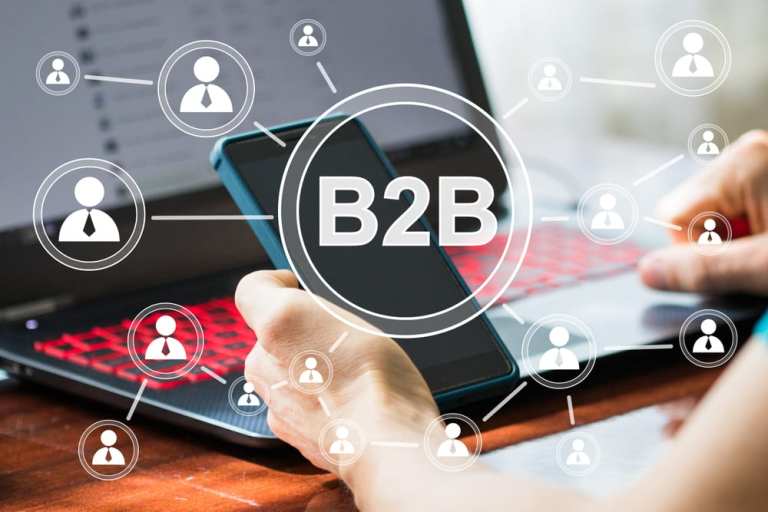
The complexities and demands of B2B eCommerce can be significantly greater than those of the consumer digital shopping realm. While that characteristic can be an argument for why it is imperative that B2B commerce goes digital, it’s also one of the biggest reasons why the industry is struggling to make progress.
Procurement officials and business professionals may prefer to shop online for their companies today, but only about 10 percent of B2B sales of products and services are online, according to Duke University and Deloitte figures released last year.
Analysts pointed to the complexity of the B2B sales process compared to consumer shopping. Company purchases often involve multiple decision-makers, contract negotiations, product specifications, ROI analysis and an approval chain — and that’s before any exchange of money is ever made.
Overall, B2B eCommerce is stuck in the past, said Inxeption CEO and Co-founder Farzad Dibachi.
“In the context of businesses doing business with each other, it’s very much 1988,” he told PYMNTS in a recent interview. “The most advanced technology is [electronic data interchange (EDI)].”
EDI is a mechanism that allows companies to exchange data electronically, to replace manual communication channels like fax or paper correspondence. The technology first emerged in the 1970s. Yet, half a century later, even some of the largest multinational conglomerates are only beginning to implement EDI into their procurement and B2B commerce operations.
“You still have phone calls and fax,” Dibachi added. “There really is no notion of electronically transacting with your partners and suppliers.”
The reliance of B2B eCommerce on EDI technology demonstrates the importance of digital data in the sector. However, it isn’t just the use case of buyer-supplier collaboration and communication in which electronic data is now a must.
Unlike B2C eCommerce, B2B transactions require heightened visibility within supply chains — the ability to move large sums of money at set times, generation and management of invoices, purchase orders, payment contracts and more. According to Dibachi, because the industry is so far behind in its digitization journey, it now has an opportunity to leapfrog into 2019 (and perhaps progress even beyond the B2C realm).
Betting On Blockchain
For Inxeption, one of the most promising innovations to achieve this leap is blockchain. Dibachi explained that the company deploys the technology in three key ways.
One is the application of the tool for product information management, allowing all business partners and stakeholders to be on the same page when information about a product changes, as well as to access a record of that product’s history and additional information like warranties. The company is also deploying blockchain to create a digital business identity for its users, a mechanism that Dibachi said will instill trust in the buyer-supplier relationship.
The concept of a blockchain-managed digital identity is not new. Last month, the EU Blockchain Forum urged the European government to deploy the technology for digital identities, calling the use case “the fundamental building block, and a key area for governments to focus on to promote risk mitigation, compliance and trust in the financial system. In the B2B eCommerce application of such a solution, digital identities could potentially support Know Your Customer [KYC] and anti-money laundering [AML] compliance efforts, and — on a less concrete, but no less important level — promote trust between trading partners.
Finally, Dibachi said the company is applying blockchain to tokenize B2B transactions on its portal, pointing to the innovation’s ability to keep a record of frequent transactions that can be settled at set intervals. For instance, that could involve using a token to pay a percentage of a transaction every week, that companies can settle every six months.
Looking ahead, he sees potential for further innovations in developing a conversational shopping cart that facilitates buyer-supplier collaboration and communication. With an investment from UPS Strategic Enterprise Fund announced this week, the company will also be looking to integrate logistics management functionality, too.
These solutions are a far cry from the EDI-powered B2B eCommerce portals of today. Indeed, Dibachi said they would enable the industry to push past its technology-adverse barriers.
“These are things that we think will force, essentially, B2B to leapfrog B2C,” he said, pointing to the higher demands of the B2B world that need to be addressed.
However, adoption of such a tool — as well as its ability to disrupt the industry as much as it intends to — will depend significantly on user adoption. Today, corporate doubt remains a strong hurdle to blockchain implementation, and, in the world of finance, many blockchain initiatives fail to move beyond the testing phase.
Last year, market intelligence company IDC found as much as 80 percent of even the largest western European businesses had no idea what blockchain is at all. Anecdotally, Blockchain Capital Partner Spencer Bogart recently told Forbes that less than 5 percent of people he speaks with outside the blockchain space actually understand the technology. Yet, corporate adoption of the tool is on the rise.
Dibachi acknowledged the blockchain hype, noting that many of the applications that proponents claim will be wildly disruptive are use cases that can be achieved another way.
“Ultimately, 90 percent of what people talk about [when they talk about] blockchain can be done with a centralized database,” he said.
The strategy, he continued, is to collaborate with service providers, and create a streamlined solution to connect many services into a holistic tool for businesses. The point isn’t to shove blockchain in customers’ faces.
“It’s a lot easier [to have] a human conversation to talk about these things than it is to sit down and say, ‘Blockchain is the next best thing, and you should sign up to it,'” he explained. “Everybody’s eyes glaze over when you say that. It’s not interesting. But if you say you can keep track of products over multiple users over time, and you can offer more warranty services and make more money, the fact that it’s all [done] with blockchain is not something they need to know.”